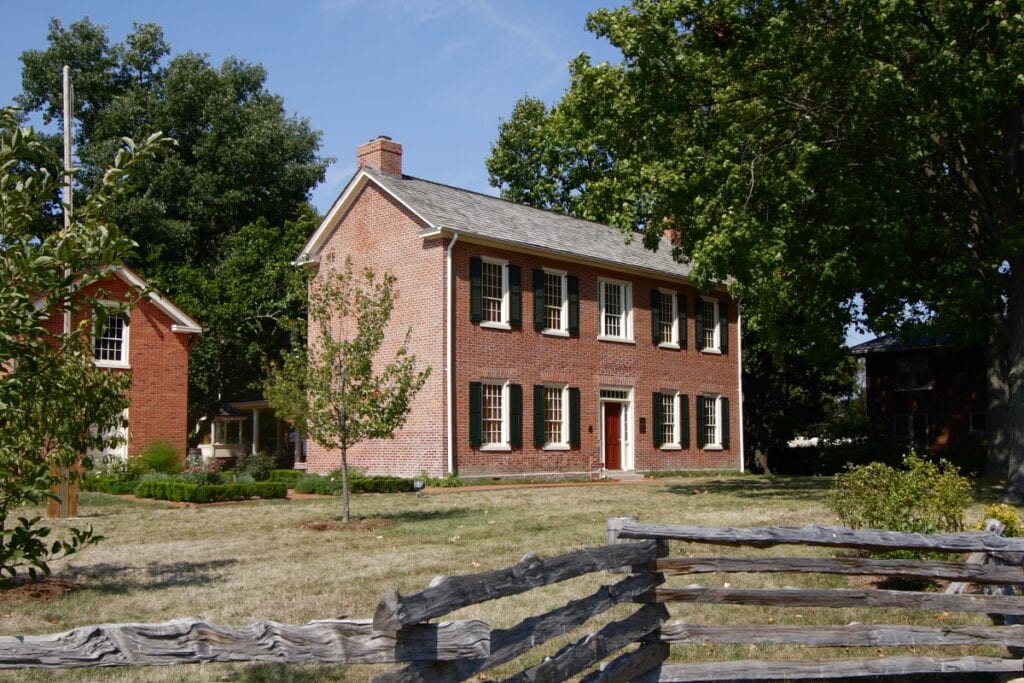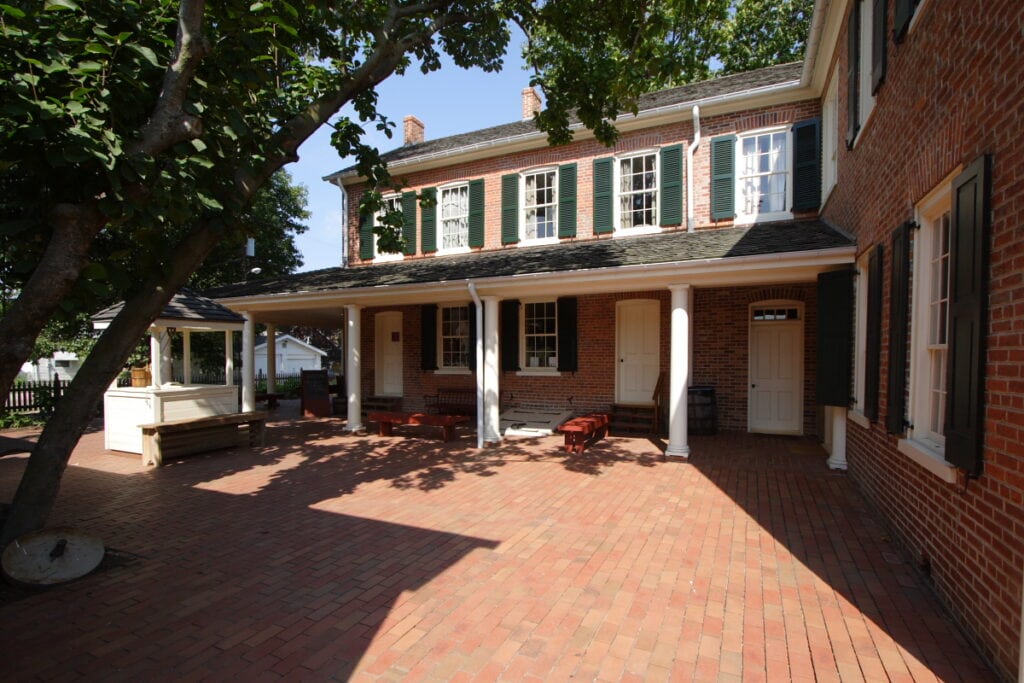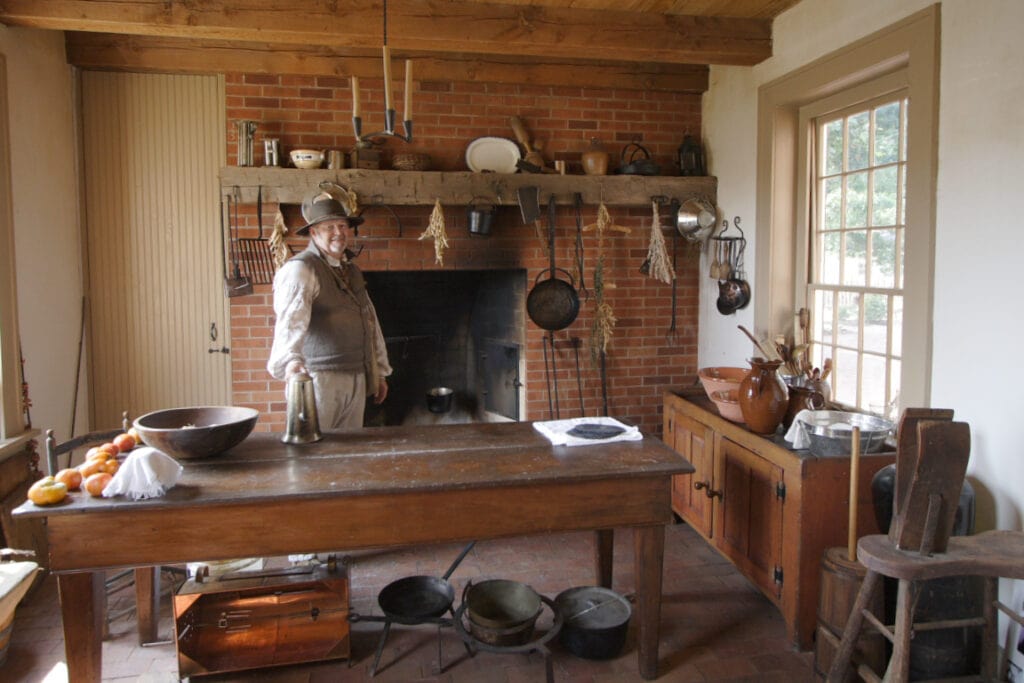The Benjamin Stephenson House in Edwardsville, Illinois, is a remarkable testament to early 19th-century American life and architecture.
Constructed in 1820 by the influential politician and builder Benjamin Stephenson, this Federal-style home has stood the test of time, encapsulating a rich tapestry of historical events, architectural evolution, and cultural significance.
Over the years, it has witnessed significant changes, from its initial role as a political hub to transforming into a public museum.
The house's journey through various owners, each leaving their unique imprint, reflects the dynamic history of Edwardsville itself.
Today, the Benjamin Stephenson House offers a glimpse into the past and is a vibrant center for community engagement and education, making it a cherished landmark in Illinois.
The Historical Significance of Benjamin Stephenson House
Early Beginnings and Construction
The Benjamin Stephenson House, a landmark in Edwardsville, Illinois, symbolizes early 19th-century architecture and political history.
Constructed in 1820 by Benjamin Stephenson, a prominent figure in Illinois politics, the house was his residence and a political headquarters.
This period marked a pivotal moment in Edwardsville's development, with the house playing a central role in the social and political discourse of the time.
A Hub of Historical Events
The house's walls have witnessed significant historical events, notably the tragic January 29, 1825 incident.
During a gathering at the Stephenson House, Daniel D. Smith suffered a fatal stab wound, leading to a high-profile murder case. This event cast a shadow over the house and highlighted the turbulent nature of the era.
The subsequent trial and acquittal of Palemon Winchester, who later established Carlinville, Illinois, and married Benjamin's daughter, Elvira, added to the house's lore.
Changing Hands and Ownership
Over the years, the Benjamin Stephenson House changed ownership 15 times, each owner leaving their mark.
Notable among these was Frederick Wolf, who, in 1845, significantly altered the house's structure.
The Sigma Phi Epsilon fraternity and the city of Edwardsville were among the last owners, with the town taking ownership in 1999.
These changes in ownership reflect the evolving nature of Edwardsville's community and its relationship with this historic structure.

Architectural Marvels of the Stephenson House
Original Design and Structure
The house was initially designed as a two-story rectangular building, showcasing the Federal architectural style prevalent in the early 1800s.
Its construction involved over 100,000 bricks made on-site by Benjamin Stephenson's indentured servants.
This detail underscores the self-sufficient and labor-intensive nature of construction during that era.
Alterations and Additions
Throughout its history, the house underwent various modifications. The most significant alteration occurred in 1845 when an ell was added, transforming the house's appearance into an L-shape and marking a shift to the Greek Revival style.
These changes, including the 1902 addition of a Victorian front porch and the 1940s modernization efforts, reflect the evolving architectural trends and the desire to keep the house contemporary.
Restoration to Former Glory
The restoration of the Benjamin Stephenson House, initiated in 2001, aimed to return the structure to its original 1820s state.
This ambitious project, managed by St. Louis Tuckpointing and Painting, involved meticulous work to preserve the house's historical integrity.
The restoration, completed in 2006, was significant, costing over $1 million and highlighting the community's commitment to preserving its historical heritage.
In exploring the Benjamin Stephenson House, one discovers not just a building but a repository of stories, architectural evolution, and a reflection of the community's values.
Visiting this historic house offers a unique glimpse into the past, blending education with architectural admiration for those interested in things to do in Illinois.
The Restoration Journey of Benjamin Stephenson House
Initiation and Funding
The monumental restoration of the Benjamin Stephenson House commenced with a groundbreaking ceremony on May 14, 2001.
This project was a significant financial undertaking, with the city of Edwardsville allocating substantial funds.
The Edwardsville Historic Preservation Committee played a pivotal role, contributing $800,000 received from the state of Illinois. Of this, $500,000 was used to acquire the property from the Sigma Phi Epsilon fraternity.
The project's total cost exceeded $1 million, including $725,000 for restoration and $215,000 for purchasing a nearby gas station, demonstrating a strong commitment to historic preservation.
Challenges and Progress
The restoration process faced numerous challenges, primarily maintaining historical accuracy while updating the structure for modern use.
St. Louis Tuckpointing and Painting, the firm overseeing the project, focused on preserving the original 1820s appearance.
The exterior work was largely completed by April 2004, but the project encountered delays, pushing the initial completion date from December 2003 to a later stage.
The meticulous restoration involved intricate plastering, wood floor installation, and careful attention to architectural details.
Completion and Opening to Public
The official dedication ceremony of the restored Benjamin Stephenson House took place on July 1-2, 2006, marking the culmination of over six years of restoration efforts.
The house, now a museum, offers a window into the 1820s, furnished and presented as it would have been during Benjamin Stephenson's time.
This transformation from a private residence to a public museum signifies the house's transition into an Edwardsville cultural and historical landmark.

Tales and Legends: The Ghost Stories of Benjamin Stephenson House
Origins of Ghost Stories
The Benjamin Stephenson House has been the subject of ghost stories and paranormal speculations since at least the 1970s.
These tales add a mysterious allure to the house, intertwining its historical significance with folklore.
The stories often center around Benjamin Stephenson himself, rumored to haunt the place of his former residence and untimely death.
Speculations and Sightings
Over the years, residents and visitors have reported various accounts of ghostly phenomena. These include phantom footsteps, unexplained noises, and sightings of apparitions.
Former residents from the 1970s and members of the Sigma Phi Epsilon fraternity have shared their eerie experiences, contributing to the house's mystique.
Such accounts range from servants appearing behind mirrors to seeing figures in military uniforms, adding layers of intrigue to the house's history.
Skepticism and Beliefs
While these ghost stories are a captivating aspect of the house's lore, they are met with varying degrees of skepticism and belief.
Some visitors and historians remain skeptical of these paranormal claims, attributing them to imagination or natural causes. In contrast, others firmly believe in the house's haunted reputation, viewing these tales as integral to its character.
This contradiction adds to the house's appeal, attracting history enthusiasts and those intrigued by the supernatural.
The House's Role in Community and Education
Cultural and Educational Programs
Since its restoration, the Benjamin Stephenson House has become a vibrant center for cultural and educational activities.
The house museum regularly hosts various events, including historical reenactments, lectures, and workshops that bring the 19th century to life.
These programs educate visitors about the era's lifestyle, customs, and the house's significant role in Illinois' early political history.
The home also offers specialized tours, providing an immersive experience of the life and times of Benjamin Stephenson and his family.
Community Engagement and Impact
The Benjamin Stephenson House has become a crucial component of Edwardsville's community life. It is a historical landmark and a gathering place for local events and celebrations.
The house's involvement in community activities has strengthened the bond between Edwardsville's residents and their rich heritage.
By engaging with the local community, the house has become a symbol of Edwardsville's commitment to preserving and honoring its past.
Future Plans and Developments
The Benjamin Stephenson House is poised to expand its educational and cultural hub role. Plans for future developments include enhancing the visitor experience with new exhibits and interactive displays.
These initiatives aim to attract a broader audience, including younger generations, ensuring the continued relevance and preservation of the house's history for years to come.

Conclusion
Reflecting on the Journey of the Benjamin Stephenson House
With its rich history and architectural beauty, the Benjamin Stephenson House is a beacon of Edwardsville's past.
From its construction in 1820 to its transformation into a museum, the house has journeyed through time, witnessing significant historical events and undergoing numerous changes.
Its restoration and preservation are a testament to the community's dedication to maintaining a tangible connection to their heritage. The house is a testament to history and a beacon of inspiration for the coming generations.
The House's Enduring Legacy
As we look back at the history of the Benjamin Stephenson House, its impact on Edwardsville and beyond is undeniable. It has become a symbol of the city's commitment to historical preservation and education.
The house's role in community engagement and cultural enrichment continues to grow, making it a vital part of Edwardsville's identity.
Its stories, architecture, and the legends surrounding it enrich the city's cultural tapestry, offering a unique window into the past.
Embracing the Future
The Benjamin Stephenson House's journey into the future is filled with potential. As it continues to serve as a hub for education and community activities, it will undoubtedly adapt and evolve, ensuring its relevance for years.
The house is poised to remain a cherished landmark, inviting visitors to explore, learn, and connect with a pivotal chapter in Illinois' history.
Its ongoing preservation and the stories it holds will continue to captivate and educate, bridging the past with the present and future.
